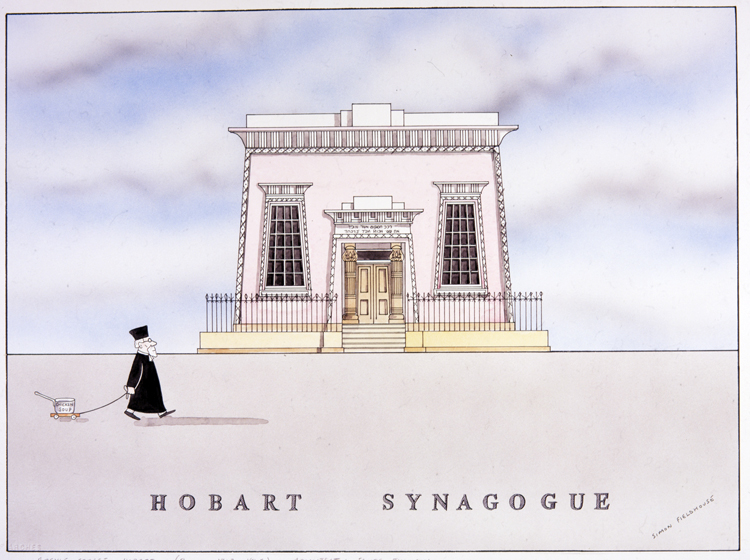
The Hobart Synagogue
The Hobart Synagogue: A Jewel of Egyptian Architecture. The Hobart Synagogue, located in the picturesque city of Hobart, Tasmania, stands as a remarkable testament to the convergence of diverse cultures and architectural styles. Built in 1845, it is not only Australia's oldest synagogue but also an exceptional example of Egyptian Revival architecture. The fusion of this unique architectural style with the purpose of religious worship is a fascinating story of cultural exchange and historical significance.
The Hobart Synagogue's Egyptian Revival architecture was a product of the early 19th century, a time when Europe was enthralled by the mysteries and wonders of ancient Egypt. This fascination was spurred by Napoleon Bonaparte's 1798 expedition to Egypt and the subsequent discovery of the Rosetta Stone, which allowed scholars to decipher hieroglyphs. As a result, Egyptian motifs, symbols, and architectural elements began to find their way into Western art and architecture.
The exterior of the Hobart Synagogue is a prime example of this fusion. The building's facade features a prominent stepped pyramid, reminiscent of an ancient Egyptian temple, with hieroglyph-like inscriptions adorning the frieze. The massive columns, with their lotus-leaf capitals, resemble those found in Egyptian temples. The overall effect is a striking amalgamation of Jewish religious symbolism and ancient Egyptian aesthetics.
Inside the synagogue, the Egyptian influence continues. The central bimah, where the Torah is read, is surrounded by columns adorned with Egyptian-style capitals. These capitals feature intricately carved floral motifs and winged sun disks, further emphasizing the connection to ancient Egypt. The pulpit and the ark, where the Torah scrolls are kept, are also adorned with Egyptian-inspired motifs.
The choice of Egyptian architecture for a Jewish synagogue is not coincidental. The Jewish faith has a long and storied history in Egypt, dating back to biblical times. The story of Moses, who led the Israelites out of Egypt, is a central narrative in Judaism. The Hobart Synagogue's design pays homage to this historical connection while simultaneously reflecting the broader cultural fascination with Egypt during the 19th century.
The Hobart Synagogue's Egyptian Revival architecture is a reminder of the enduring power of architectural styles to transcend time and place. It stands as a unique and beautiful example of cultural exchange and adaptation. Furthermore, it reflects the resilience and adaptability of the Jewish community in Tasmania, which, despite its small size, has maintained its religious and cultural identity for over a century.
In conclusion, the Hobart Synagogue is a remarkable architectural gem that beautifully blends the ancient Egyptian aesthetic with the traditions of Judaism. Its Egyptian Revival architecture is a testament to the historical and cultural interplay that has shaped the world's architectural landscape. This synagogue, with its unique design and rich history, is not only a place of worship but also a living testament to the enduring legacy of ancient Egypt in the modern world. It remains a source of inspiration for those who appreciate the beauty of diverse cultural influences converging in architectural masterpieces.